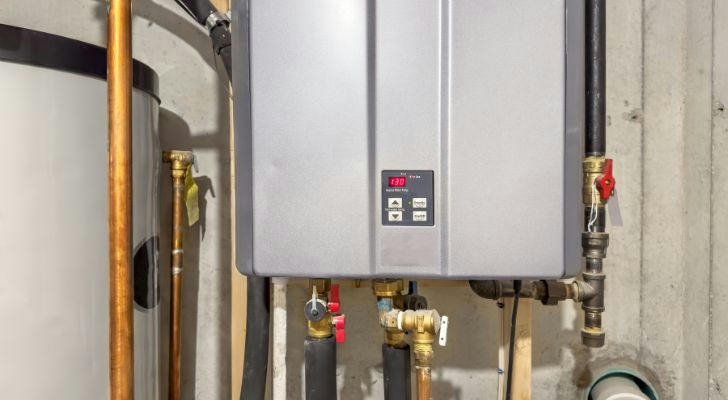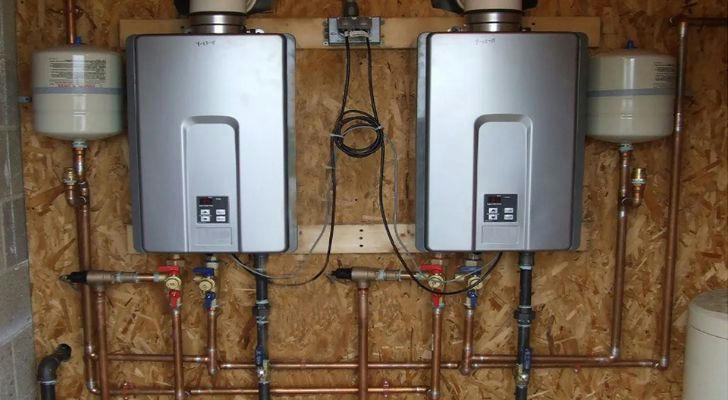Water Heater Upgrades: Improve Energy Efficiency and Comfort
A reliable supply of hot water is central to everyday comfort—whether for morning showers, dishwashing, or laundry. Yet traditional water heaters can silently drain energy and money, especially once they approach the end of their 8‑to‑12‑year life span. Upgrading to a modern, high‑efficiency system is one of the most impactful improvements homeowners can make to cut utility bills, shrink carbon footprints, and ensure consistent warmth throughout the year.

Why an Upgrade Makes Sense
Older tank‑style heaters constantly re‑heat 40–80 gallons of water—even when no one is home—wasting up to 20 % of a household’s total energy use. Newer units are engineered with better insulation, smarter thermostats, and quicker recovery times. Upgrading can:
- Lower energy costs by 15–40 % depending on model
- Deliver steadier water temperature with fewer “cold‑feed” surprises
- Reduce the risk of leaks or catastrophic tank failure
- Qualify for federal, state, or utility rebates that offset purchase price
Because water heating is often the second‑largest energy expense after HVAC, efficiency gains pay off quickly—often within three to five years.
Popular High‑Efficiency Options
Choosing the right heater starts with understanding the main categories and how they suit different households.
1. Tankless (On‑Demand) Heaters
Instead of storing hot water, tankless units heat it only when a faucet opens. This eliminates standby losses and provides endless hot water—ideal for growing families. Gas‑fired models reach up to 98 % efficiency (EF 0.98), while electric versions are easier to install but may require upgraded circuitry.
2. Heat‑Pump Water Heaters (Hybrid)
A hybrid pulls heat from ambient air—like a reverse refrigerator—and transfers it to the water tank. Using electricity to move heat rather than create it, hybrids achieve 2–3 × the efficiency of standard electric models. They work best in garages, basements, or utility rooms with ample airflow and temperatures above 40 °F (4 °C).
3. Condensing Gas Tanks
For homes that prefer traditional storage, high‑efficiency condensing tanks capture and reuse heat from exhaust gases. With larger coils and better insulation, they reach EF ratings above 0.80, compared to 0.60–0.65 for conventional gas tanks.
4. Solar Thermal Systems
Where sunshine is abundant, roof‑mounted collectors pre‑heat water before it enters a backup tank. While upfront costs are higher, solar systems can cover 50–80 % of annual hot‑water demand and drastically reduce gas or electric consumption.
Sizing and Capacity: Getting It Right
An undersized heater results in lukewarm showers, while an oversized one wastes energy. Use these guidelines:
| Household Size | Tankless Flow Rate | Tank Storage Size |
|---|---|---|
| 1–2 people | 4–6 GPM | 30–40 gal |
| 3–4 people | 7–9 GPM | 50–60 gal |
| 5+ people | 10 GPM or more | 75–80 gal |
Don’t forget peak‑demand scenarios—like two showers and a dishwasher running simultaneously. A qualified installer can perform a First‑Hour Rating (FHR) calculation to fine‑tune capacity.

Installation Considerations
Upgrading isn’t always plug‑and‑play. Factor in:
- Fuel source: Switching from electric to gas (or vice versa) may require new venting, gas lines, or breakers.
- Venting requirements: Condensing and tankless gas units use PVC vents, often through a side wall rather than a chimney.
- Drainage: Hybrids and condensing systems produce condensate that needs a floor drain or condensate pump.
- Space constraints: Tankless units free floor space but need a wall with sufficient clearance. Hybrids require roughly 700 cu ft of ambient air for best performance.
Professional installation ensures code compliance, safety, and maintains manufacturer warranties.
Cost, Incentives, and Payback
| System Type | Typical Installed Cost | Annual Savings* | Simple Payback |
|---|---|---|---|
| Standard Electric | $700–$1 200 | — | — |
| Heat‑Pump Hybrid | $1 800–$3 500 | $300 | 4–7 yrs |
| Tankless Gas | $2 000–$3 200 | $150 | 6–9 yrs |
| Condensing Gas | $1 600–$2 800 | $120 | 6–8 yrs |
| Solar + Backup | $4 000–$7 000 | $400 | 8–10 yrs |
*Savings versus a standard electric tank for a family of four; local rates vary.
Many U.S. homeowners can claim a 30 % federal tax credit (up to $2 000) on ENERGY STAR® heat‑pump water heaters plus additional state and utility rebates. Always check current programs before purchase.
Maintenance Tips to Maximize Lifespan
- Flush sediment from tank‑type heaters every 6–12 months to prevent corrosion and maintain efficiency.
- Descale tankless units annually if you have hard water; install a whole‑house filter or softener for added protection.
- Inspect anode rods in storage tanks every two years and replace when 50 % consumed.
- Set thermostat to 120 °F (49 °C) to balance scald protection, energy savings, and bacterial control.
- Test temperature‑pressure relief (TPR) valves annually to ensure safe operation.
Routine upkeep can extend a modern heater’s life to 15–20 years—or even longer for tankless systems.
Comfort Beyond the Shower
Efficiency is only part of the story. Upgrades can also enhance daily comfort:
- Stable temperatures: Smart modulating burners in tankless units adjust output instantly, eliminating “cold‑water sandwich” effects.
- Faster recovery: Hybrid and condensing tanks re‑heat quicker, so large households rarely run out of hot water.
- App connectivity: Many new models let you schedule vacation mode or monitor usage from your smartphone, catching leaks before they cause damage.
Making the Smart Switch
A thoughtful water heater upgrade is an investment in lower bills, greater comfort, and reduced environmental impact. Start by evaluating your household’s hot‑water habits, available energy sources, and installation space, then compare high‑efficiency options and incentive programs. With the right choice and proper maintenance, you’ll enjoy reliable hot water—while keeping energy costs comfortably in check—for years to come.
